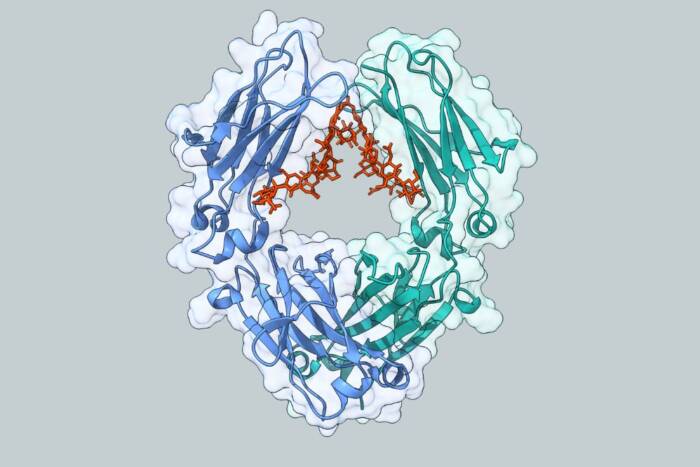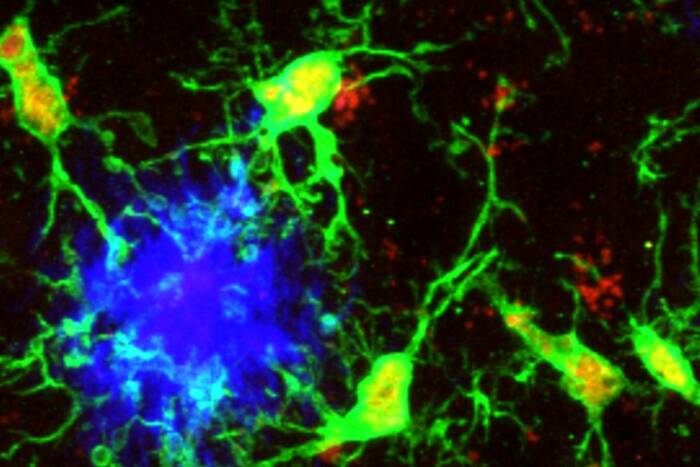Mathematicians Steven Strogatz and Ian Stewart win Lewis Thomas Prize for Writing about Science
by WYNNE PARRY
It takes a particular breadth of mind to succeed in bridging the world of advanced science and the world of letters. But perhaps even more unusual is the mathematician who can translate complex numerical investigations into poetry, comedy, suspense, and mystery for readers untrained in the field.
 (opens in new window)
(opens in new window)
Lewis Thomas Prizewinners Stephen Strogatz (left) and Ian Stewart (right) discussed mathematics with actor and science advocate Alan Alda at the presentation ceremony in Caspary Auditorium on March 30.
Ian Stewart and Steven Strogatz have spent their careers doing just this, and earlier this year, they became the first mathematicians to receive the Lewis Thomas Prize for Writing about Science at a ceremony in Rockefeller’s Caspary Auditorium.
“This year, we are delighted to honor two accomplished writers from the discipline that represents the language of science—mathematics,” says Jesse Ausubel, director of the Program for the Human Environment and chairman of the selection committee. “Not only are Dr. Stewart and Dr. Strogatz both distinguished mathematicians, their books and essays have a dimension of inspiration that embodies the purpose of the Lewis Thomas Prize. And they have worked together. In 1993 they co-authored a widely read paper on coupled oscillators and biological synchronization.”
The Lewis Thomas Prize, established by The Rockefeller University’s Board of Trustees in 1993, honors individuals who bridge the worlds of science and the humanities.
Dr. Stewart, an emeritus professor of mathematics at The University of Warwick and emeritus professor of geometry at Gresham College in London, has written more than 80 books, including several bestsellers. His popular work explores the power, beauty, and fun in mathematics, often with a historical perspective.
Dr. Stewart’s recent book In Pursuit of the Unknown: 17 Equations that Changed the World gives an account of mathematical discoveries that have contributed to human progress, from Pythagoras’ Theorem to the Black-Scholes Equation. His other recent publications include Visions of Infinity: The Great Mathematical Problems and Symmetry: A Very Short Introduction. With over 180 published research papers, he remains an active research mathematician, currently working on pattern formation, chaos, network dynamics, and biomathematics.
Dr. Strogatz, a professor of applied mathematics at Cornell, recently penned a series of columns in The New York Times with a fundamental question: What are numbers? Building upon these essays, his book The Joy of x takes readers from such basics to the questions tackled by modern mathematicians. He is also the author of Nonlinear Dynamics and Chaos, Sync, and The Calculus of Friendship, and a frequent guest on National Public Radio’s “Radiolab” and “Science Friday.”
Early in his career as a mathematician, Dr. Strogatz worked on problems in mathematical biology, including the geometry of supercoiled DNA and the collective behavior of biological oscillators—the topic of a Scientific American piece he coauthored with Dr. Stewart in 1993. In a highly cited 1998 Nature paper written with Duncan Watts, also at Cornell, Dr. Strogatz made perhaps his best-known contribution to the field by introducing the concept of “small-world” networks, in which most nodes are only a few steps away from one another.


